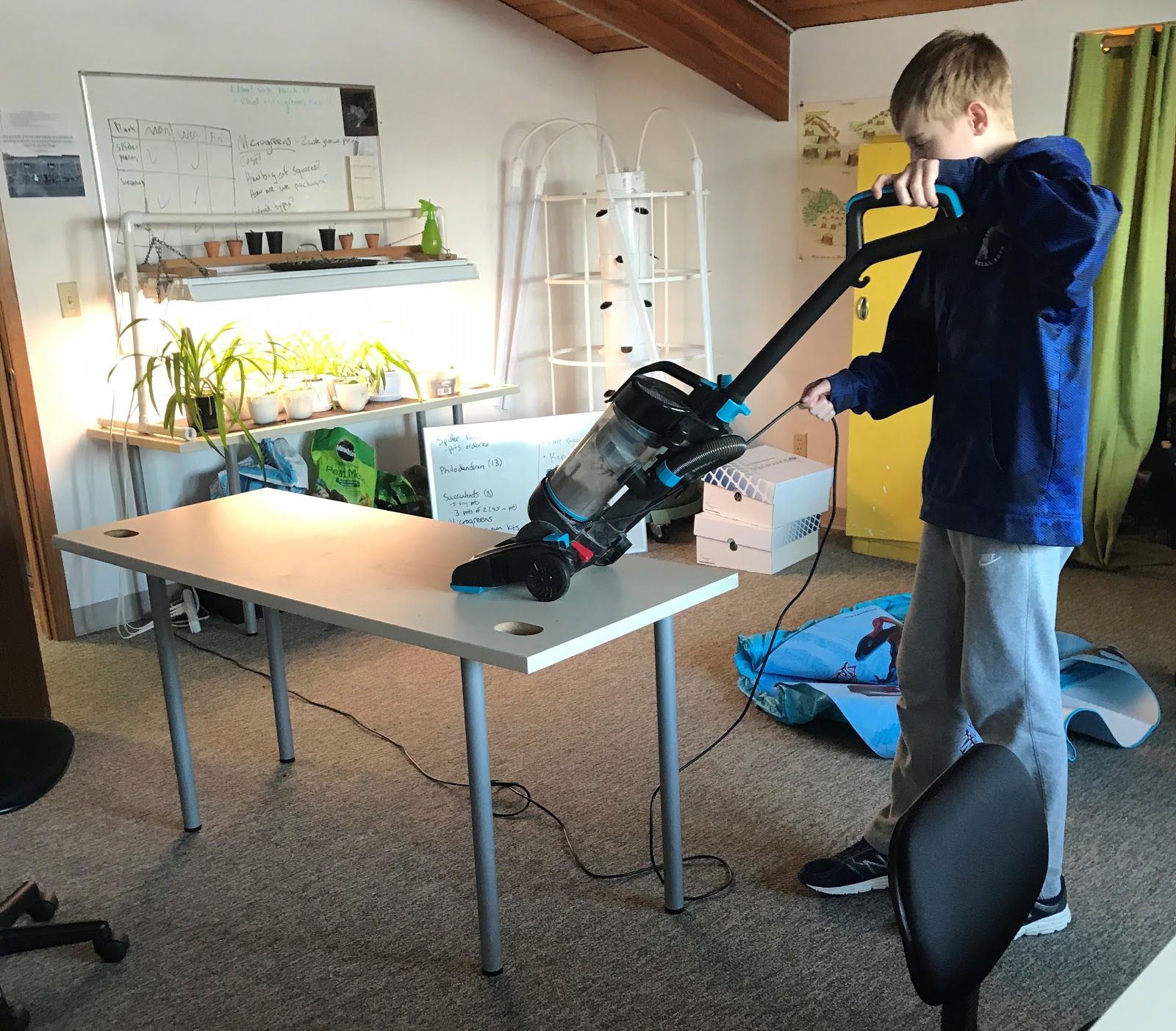Last year, after a very productive period of repotting and propagation, I asked a student to clean up the loose dirt on the table and floor. When I came back, the student had decided to kill two birds with one stone and vacuum the dirt off the floor and the table. At the time, I laughed and snapped a picture and thought nothing more.
Months later, I asked a couple of students to measure 29 feet of cord for a macrame project. Despite the fact that we have several tape measures in our toolbox, the students chose to use every ruler in the math room to get the job done. You may have seen this phenomena in your own home. It can be frustrating to ask your child to measure three cups of liquid only to see them reach for the ¼ cup, but they are not doing it to annoy you. Plain and simple, efficiency is the work of the adult. Throughout our own adolescence, we tinkered and tested out different ways to solve problems with varying success. As we got older, we sought out the simplest of solutions and created technology that made our own lives easier.
There is value in the slow work of adolescence; it provides time for self-construction. Our adolescents are learning in these moments how to do things for themselves so that they may care for themselves and others when they become Fully Fledged AdultsTM.
How do we support our adolescents in these moments? What do we do after we’ve taken a quick pic so we can all have a good laugh in five years? Montessori said that we should work side by side with the adolescent. We should model the work as it should be done, and encourage our adolescent to perfect it at their own pace. The work that the adolescent does should have real, tangible results. They know when they are given busy work and they are not afraid to be vocal about it. They need to know that their contribution will be felt by more than just themselves, and with a trusted adult offering guidance and when they need it, they will feel ready to face the world ahead.


